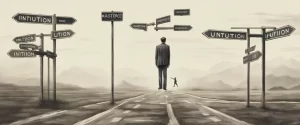
In the vast and ever-evolving world of literature, there are certain books that stand out as beacons of inspiration, guiding readers toward a deeper understanding of human creativity and the pursuit of originality. Two such books that have garnered considerable acclaim are “Creativity” by Mihaly Csikszentmihalyi and “Originals” by Adam M. Grant. With their insightful exploration of the creative process, these works have not only sparked curiosity but have also challenged conventional wisdom and transformed the way we perceive the genesis of great ideas.
In Creativity, Mihaly Csikszentmihalyi embarks on an illuminating journey to unravel the enigma surrounding human creativity. The renowned psychologist, known for his groundbreaking work on the psychology of optimal experiences, delves deep into the nature of creativity, uncovering its elusive secrets. Csikszentmihalyi’s book offers profound insights on the conditions that foster creativity, the conscious and subconscious processes involved, and the impact of creativity on individuals and society at large. By exploring various sectors, from the arts to the sciences, he presents an encompassing view of creativity, dissecting its multifaceted dimensions and proving that it is not limited to the realm of a chosen few, but rather accessible to all.
On the other hand, Adam M. Grant, a renowned organizational psychologist and bestselling author, takes readers on a captivating journey in his book “Originals.” Grant challenges the traditional assumption that true creativity can only arise from a solitary genius, proposing that it is the result of a collective effort fueled by strategic thinking and unconventional approaches. “Originals” not only challenges existing concepts of creativity but also explores the dynamics of the creative process, addressing topics such as risk-taking, motivation, and the balancing act between conformity and innovation. Through captivating real-life stories and meticulously researched data, Grant offers readers a fresh perspective on what it means to be an original thinker and how to champion creative ideas in a world that often discourages deviation from the norm.
As we embark on this comparative study of “Creativity” and “Originals,” we must acknowledge the imminent convergence in their focus—both authors strive to unravel the complex tapestry of human creativity. However, their differing viewpoints, emphasis, and methodologies provide an exciting opportunity to explore the broader landscape of creativity from multiple perspectives. Through a side-by-side examination of these influential works, we seek to discern the similarities, divergences, and complementary nature of their insights, ultimately gaining a more comprehensive understanding of the intricacies underlying the magnificent world of human innovation.
In this study, we will critically analyze the theories and concepts proposed by Csikszentmihalyi and Grant, examining how their ideas can be applied to diverse contexts. Through an exploration of their respective research methodologies, the presentation of empirical evidence, and the synthesis of their arguments, we aim to delineate the strengths, weaknesses, and potential complementarity of their approaches. Furthermore, we will shed light on the practical implications of their theories by investigating examples from various domains, such as art, science, business, and education.
By placing “Creativity” and “Originals” in conversation with each other, this comparative study will not only deepen our understanding of human creativity but also illuminate the pathways to original thinking, offering invaluable insights to individuals, organizations, and societies at large. Through our exploration of these seminal works, we hope to inspire readers to embark on their own creative journeys, to embrace their unique ideas, and to reshape the world with a newfound sense of purpose and innovation.
Brief Summary of Two Books
Creativity by Mihaly Csikszentmihalyi
The book “Creativity: The Psychology of Discovery and Invention” by Mihaly Csikszentmihalyi explores the concept of creativity and the psychological processes behind it. Csikszentmihalyi, a renowned psychologist, delves into the understanding of creativity by studying the lives of highly creative individuals from various fields, including art, science, and business.
In the book, Csikszentmihalyi asserts that creativity is not solely the domain of highly gifted individuals but is a universal trait that can be fostered and nurtured in anyone. He explores the notion that creativity is not a solitary experience but rather a collaborative effort that is influenced by cultural, social, and educational factors.
Csikszentmihalyi introduces the concept of the “flow state,” in which individuals are fully immersed in an activity and experience a sense of energized focus, complete absorption, and enjoyment. He argues that this state of flow is essential for unleashing creative potential and that individuals who are able to achieve this state are more likely to generate innovative ideas.
Throughout the book, Csikszentmihalyi presents numerous case studies and anecdotes from creative individuals, shedding light on their thought processes, motivations, and the challenges they encounter. He explores how creativity can be cultivated through a combination of perseverance, passion, and the willingness to take risks.
Furthermore, Csikszentmihalyi explores the role of culture, education, and society in nurturing creativity. He argues that creativity is not solely an individual trait but is deeply influenced by our surroundings and the values of the communities we belong to. He provides insights into how schools, workplaces, and society at large can encourage and support creative thinking.
In conclusion, “Creativity” by Mihaly Csikszentmihalyi offers a comprehensive exploration of the nature of creativity, providing valuable insights into the thought processes, habits, and environment that foster innovative thinking. By studying the lives of creative individuals and examining the cultural and social factors that shape creativity, Csikszentmihalyi emphasizes the importance of nurturing creativity in individuals and society as a whole.
Originals by Adam M. Grant
Originals” by Adam M. Grant is a non-fiction book that explores the concept of originality and how one can champion new ideas and drive creative change in different aspects of life. Grant challenges conventional wisdom and offers insights into the mindset and behaviors of individuals who are successful in introducing innovative ideas and making a positive impact in their fields. Drawing from social science research and various real-life examples, the book provides a comprehensive examination of the factors that influence innovation and creativity. It offers practical advice on managing fear and doubt, fostering diverse teams, recognizing and nurturing original ideas, and navigating the process of taking risks. Overall, “Originals” aims to inspire readers to question the status quo and become more confident and effective in championing their own unique ideas.
Comparison between Two Books

Similarities in Creativity
The books “Creativity” by Mihaly Csikszentmihalyi and “Originals” by Adam M. Grant both explore the concept of creativity and provide valuable insights into how individuals can enhance their creative potential. While they approach the subject from slightly different angles, there are several similarities in their perspectives and ideas. Here are some key similarities about creativity discussed in these books:
1. Creative Process: Both authors emphasize the importance of understanding the creative process. Csikszentmihalyi suggests that creativity involves a cycle of preparation, incubation, insight, and elaboration. Grant, on the other hand, explains that creativity often emerges through iterations and experimentation. Both authors argue that creativity is not a random or spontaneous occurrence but rather a process that can be cultivated and optimized.
2. Originality and Unconventionality: Csikszentmihalyi and Grant both emphasize the significance of originality in the creative process. Csikszentmihalyi describes creativity as “the ability to go beyond traditional ideas, patterns, and relationships.” Similarly, Grant discusses the importance of non-conformity and challenging the status quo in order to generate novel and innovative ideas.
3. Collaboration and Networks: Both books highlight the role of collaboration and social networks in fostering creativity. Csikszentmihalyi argues that creative individuals often thrive in environments that encourage feedback, support, and diverse perspectives. Grant complements this notion by discussing the importance of seeking out diverse and challenging social networks that spur creativity through exposure to different ideas and perspectives.
4. Flow and Motivation: Csikszentmihalyi introduces the concept of “flow,” which refers to the state of complete immersion and joy in an activity, as a critical element of creative experiences. Similarly, Grant suggests that individuals who are intrinsically motivated and passionate about their work are more likely to exhibit creative outputs. Both authors agree that finding intrinsic motivation and entering a state of flow is vital for nurturing creative ideas and outputs.
5. Risk-taking and Failure: Csikszentmihalyi and Grant emphasize the necessity of taking risks and embracing failure as integral parts of the creative journey. Csikszentmihalyi argues that creativity inherently involves uncertainty and risk, while Grant encourages readers not to fear failure but rather to see it as a stepping stone towards success.
In summary, both “Creativity” by Mihaly Csikszentmihalyi and “Originals” by Adam M. Grant highlight the importance of understanding the creative process, embracing originality, fostering collaboration and networks, finding motivation and flow, and accepting risk-taking and failure. By considering these shared themes, readers can gain deeper insights into how to harness and enhance their own creativity.
Divergences in Creativity
“Mihaly Csikszentmihalyi’s Creativity” and “Adam M. Grant’s Originals” are both influential books that offer unique perspectives on the topic of creativity. While both authors shed light on the process and importance of creative thinking, they have different approaches and divergent viewpoints in certain aspects.
Csikszentmihalyi’s “Creativity” delves into the psychology of creativity, exploring the concept of flow and how it relates to the creative process. Csikszentmihalyi argues that creativity arises through a state of complete immersion and focus, where individuals become fully engaged and lose track of time. He emphasizes the importance of intrinsic motivation and the ability to push beyond conventional thinking to achieve original ideas. The book provides practical advice on how to cultivate creativity and create an environment that fosters innovation.
On the other hand, in “Originals,” Adam M. Grant examines what it takes to be an original thinker and challenges common assumptions about creativity. Grant highlights the idea that many successful creative individuals do not necessarily possess extraordinary talent or produce groundbreaking ideas right away. Instead, he argues that originality often comes from embracing failure and learning from it, as well as questioning and challenging the status quo. Grant presents numerous examples and research studies to emphasize the importance of finding new approaches, challenging conventional wisdom, and navigating the social dynamics that can hinder creativity.
One significant divergence between the books is their focus on the individual versus the environment. Csikszentmihalyi’s “Creativity” largely centers around the role of the individual in cultivating creativity and developing a mindset conducive to generating original ideas. He emphasizes personal traits such as curiosity, persistence, and the ability to pursue goals with intrinsic motivation. In contrast, Grant’s “Originals” highlights the impact of the social and organizational context on creativity. Grant explores how external factors like social norms, group dynamics, and organizational culture can influence individuals’ creative output.
Another key difference lies in their perspectives on risk-taking and failure. Csikszentmihalyi generally presents a more positive view of failure as an integral part of the creative process, emphasizing its potential for growth and learning. He argues that creative individuals often face setbacks but are resilient enough to learn from them and persist. In contrast, Grant in “Originals” goes beyond the notion of embracing failure and explores the concept of calculated risks. He highlights the importance of balancing risks and rewards strategically, suggesting that taking smart risks can amplify the impact of original ideas.
In conclusion, while both “Creativity” by Mihaly Csikszentmihalyi and “Originals” by Adam M. Grant explore the realm of creativity, they differ in their perspectives on individual versus environmental influence and the role of risk-taking and failure. Nonetheless, both books contribute valuable insights to the understanding and cultivation of creativity.

Conclusion
Both Creativity by Mihaly Csikszentmihalyi and Originals by Adam M. Grant are highly regarded books that offer valuable insights into different aspects of creativity and innovation.
Creativity by Mihaly Csikszentmihalyi delves into the psychology of creativity and explores the conditions and mindset necessary for fostering creative flow. Csikszentmihalyi combines theory and practical examples to provide readers with a comprehensive understanding of the creative process. This book is particularly relevant for individuals who are interested in understanding the internal aspects of creativity and how to nurture their own creative potential.
On the other hand, Originals by Adam M. Grant focuses on the concept of originality and how individuals can champion new ideas and drive change. Grant presents numerous case studies and research findings to shed light on the mindset and actions of successful innovators. This book is beneficial for those seeking to navigate the challenges of introducing original ideas within various domains, including entrepreneurship, organizations, and society as a whole.
Ultimately, the choice between the two books depends on your personal interests and the specific aspects of creativity and innovation you are interested in exploring. Both authors have made significant contributions to the field, and reading either book would provide valuable insights.



